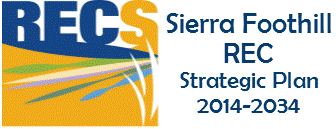Seed density, seedling and nutrient supply in California Grassland
Principal Investigator: Valerie Eviner
In most ecosystems, litter senesced at the end of the growing season is assumed to be the main source of carbon and recycled nutrients.
However, experiments conducted by Eviner and Vaughn at HREC demonstrate that self-thinning of grass seedlings provide N and C inputs that are similar in magnitude to the C and N derived from senesced litter.
In the late spring, 70% of aboveground plant N is retranslocated from senescing litter to seeds. Over 90% of these seeds germinate in the fall and these seeds and seedlings likely take up and store N during the early rains, when a significant amount of litter-derived N is leached from the system.
Intense seedling competition through the growing season results in mortality of approximately 75% of the seedling, resulting in a steady release of highly labile C and N.
Since seedling density largely drives seedling thinning, shifts in seed density (through management, or environment-induced changes in seed production) likely have large impacts on plant growth and nutrient cycling.
Similarly, seed granivory's impact on seed density can have strong impacts on the grassland community and ecosystem.
The research will monitor site-to-site and year-to-year variations in the relationships between granivory, seed density, seedling thinning, plant biomass, nutrient cycling and leaching throughout the growing season. This work will also assess how grazing impacts these interactions.





